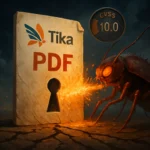Cybersecurity researchers at Sucuri have uncovered an alarming new attack vector targeting WordPress websites through the Must-Use Plugins (MU-plugins) directory. This sophisticated exploitation technique, first detected in February 2025, demonstrates how threat actors are evolving their tactics to bypass traditional security measures and maintain persistent access to compromised websites.
Understanding the Must-Use Plugins Security Risk
Must-Use plugins represent a unique security challenge in WordPress architecture due to their automatic execution characteristics. Located in the wp-content/mu-plugins/ directory, these PHP files operate outside the standard plugin management interface and execute automatically with every page load, regardless of administrative settings. This inherent behavior makes them particularly attractive to attackers seeking to maintain persistent access while evading detection.
Analysis of Detected Malware Variants
Security researchers have identified three distinct malware variants exploiting the MU-plugins functionality, each designed for specific malicious purposes:
Sophisticated Browser Redirect Implementation
The redirect.php malware module employs advanced evasion techniques to selectively redirect visitors to phishing domains. Notable features include administrator detection avoidance and search engine crawler bypassing, demonstrating sophisticated targeting capabilities that help maintain stealth operation.
Remote Command Execution Through GitHub Integration
A particularly concerning discovery is a web shell implementation masquerading as index.php, which establishes communication with attacker-controlled GitHub repositories. This approach allows threat actors to execute arbitrary PHP code while leveraging legitimate services to avoid detection by traditional security monitoring systems.
Dynamic JavaScript Injection Framework
The custom-js-loader.php variant represents an advanced client-side attack vector, capable of manipulating website content in real-time and intercepting user interactions. This malware specifically targets advertising revenue through fraudulent pop-ups and content manipulation.
Infection Vectors and Security Recommendations
While initial compromise vectors remain under investigation, security experts point to vulnerable plugins, outdated themes, and compromised credentials as primary attack vectors. To mitigate these threats, website administrators should:
- Implement regular MU-plugins directory audits
- Deploy file integrity monitoring solutions
- Maintain comprehensive access logs
- Enforce strong authentication protocols
- Keep all WordPress components updated
This emerging threat underscores the critical importance of implementing comprehensive security measures for WordPress installations. Organizations must adopt a proactive security stance, incorporating regular security audits, robust monitoring solutions, and incident response planning. The exploitation of MU-plugins represents a significant evolution in WordPress-targeted attacks, requiring enhanced vigilance and updated security practices from website administrators and security professionals alike.






